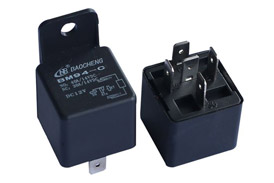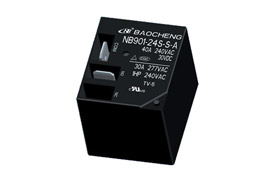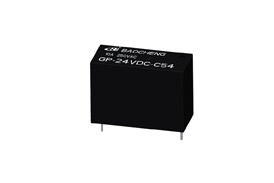The action process of the contact can be divided into two parts: contact closing and contact opening, that is, the pull-in and release process of the relay. They are cyclically switched at a certain frequency to form the contact opening and closing phenomenon. In the process of contact closure and opening, there are many special physical and chemical phenomena, such as contact resistance, contact jitter and arc.
Principle of action when contacts are closed.
Power Relay's moving contact and static contact will bounce when they touch each other, that is, uncontrolled gap opening and closing. At this time, the Joule heat generated by the arc and the energized current greatly affects Opening and closing ability of the relay.
Principle of action when contacts are open.
When the contact opens and cuts off the load, dazzling sparks and arcs will be generated. The generated arc should continue until the arc voltage drops below the minimum arc voltage value, which will cause greater damage to the contact. And different contact materials and contact gap size directly affect the radiation state of arc electrons and the easiness of occurrence, so they are important conditions for determining the arc.
Choice of electrical environment.
As a Relay Electronics Manufacturer, I have some knowledge about relays to share with you.
Select the type and capacity of the relay contact according to the load situation.
Long-term practice at home and abroad has proven that about 70% of faults occur on contacts, which shows that the correct selection and use of relay contacts is very important. The combination form and number of contact groups shall be determined according to the actual situation of the controlled circuit. See Table 6 for common contact combinations. The moving and closing contact pairs in the moving and closing contact group and the changeover contact group have a lower load bounce and a greater amount of compensation after the contact is ablated when they are turned on. The pair of dynamic break contacts in the point group and the changeover contact group should be high. The whole machine line can adjust the contact position appropriately to use as many moving contacts as possible.
It is very important to determine the parameters according to the load capacity and load properties (resistive, inductive, capacitive, lamp load and motor load). It is incorrect to think that the contact switching load is smaller than the switching load. It is incorrect. Generally speaking, the relay switching load is greater than 100mA and less than 75% of the rated current at the rated voltage. If the current is less than 100mA, the carbon deposition of the contact will increase, and the reliability will decrease. Therefore, 100mA is called the test current, which is the assessment content of the technical conditions and level of the relay manufacturer by professional standards at home and abroad. Because general relays do not have low-level switching capability, users should specify when ordering relays with a load of 50mV and less than 50μA. If necessary, the relay manufacturer should be selected to assist in selection.
The rated load and life of the contacts of the relay refer to the number of resistive actions under the rated voltage and current. When the load exceeds the rated voltage, it can be selected by referring to the contact load curve. When the nature of the load changes, its contact load capacity Will change. Our company also has BS4 Relay on sale, welcome to consult.






















